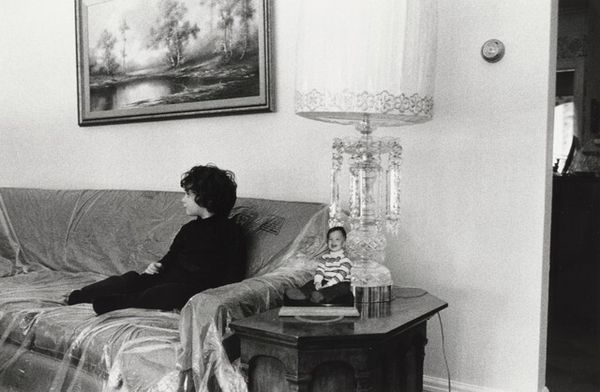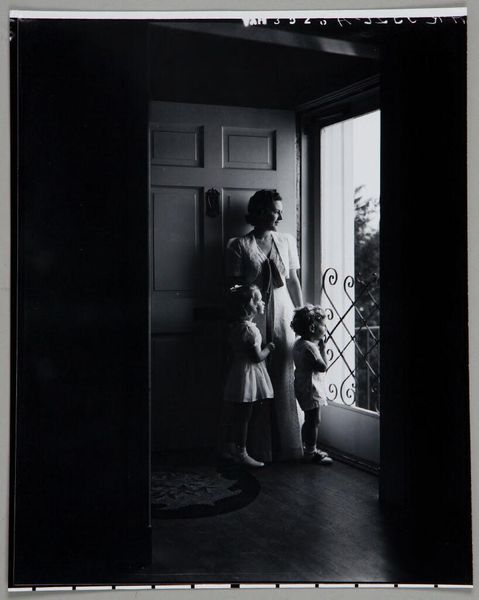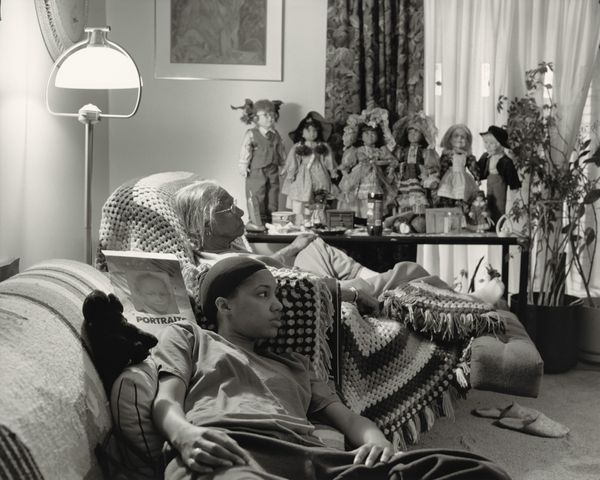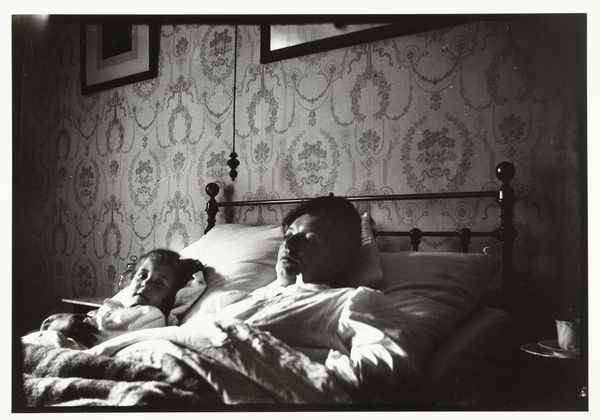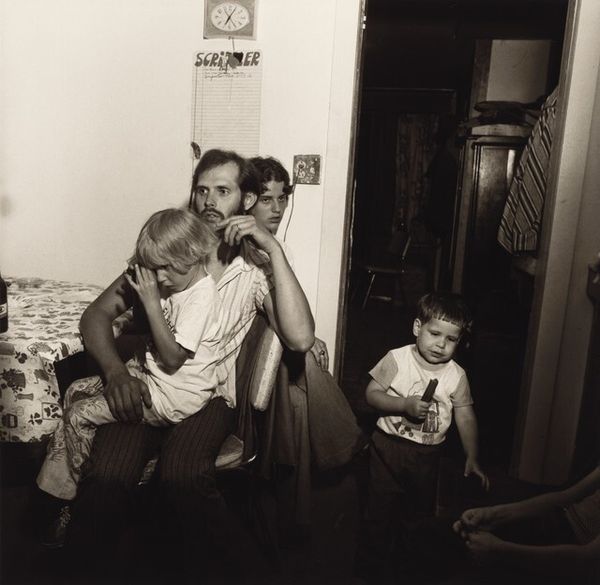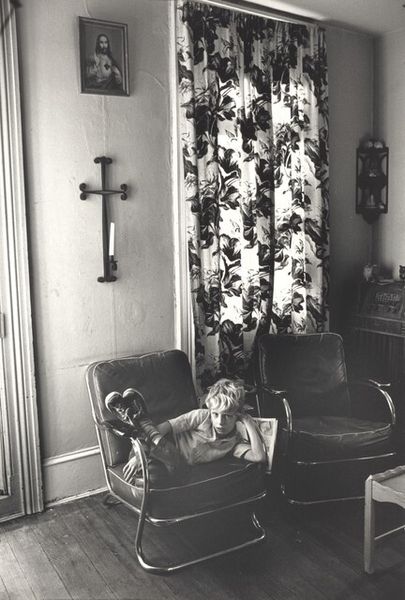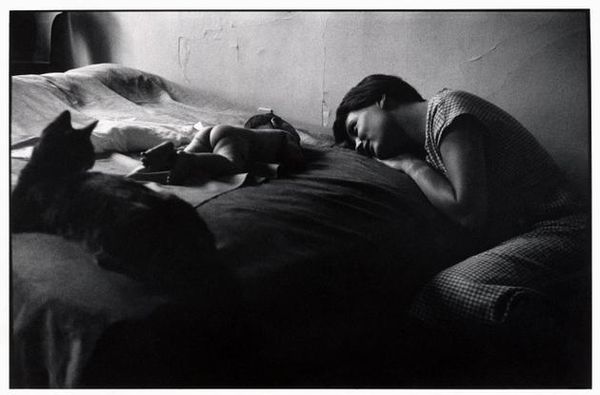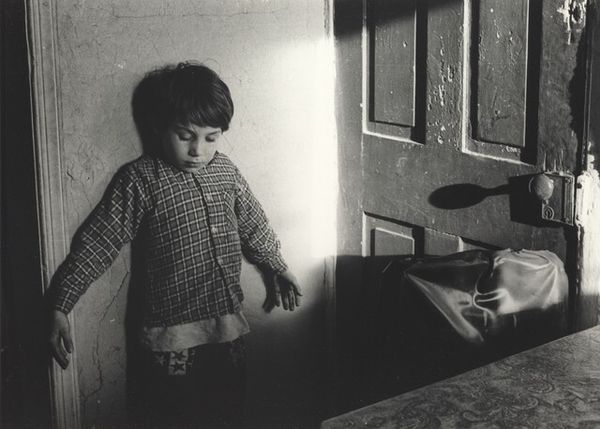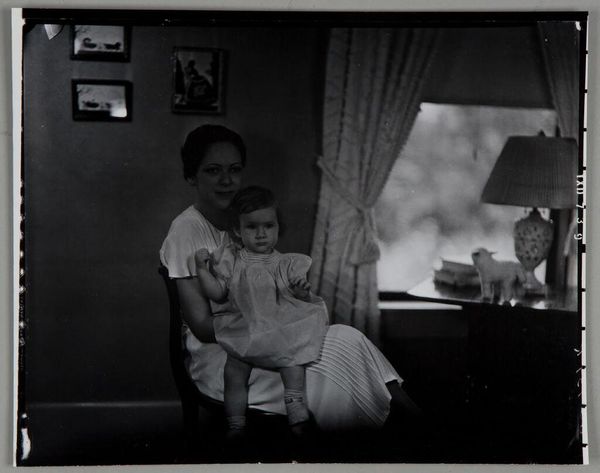
photography, gelatin-silver-print
#
portrait
#
black and white photography
#
photography
#
black and white
#
gelatin-silver-print
#
monochrome photography
#
ashcan-school
#
monochrome
#
realism
#
monochrome
Dimensions: image: 34.9 × 45.7 cm (13 3/4 × 18 in.) sheet: 40.3 × 51.1 cm (15 7/8 × 20 1/8 in.)
Copyright: National Gallery of Art: CC0 1.0
Editor: We're looking at Nancy Andrews' "Yvette's Family, no. 3" from 1993, a gelatin-silver print. It’s a pretty striking black and white image. The stark contrast really brings out the textures, but the composition feels…unbalanced, almost chaotic. What do you see in this piece, beyond just the surface? Curator: Initially, my attention is drawn to the spatial arrangement and the tonality. Consider the gradations from light to dark, the deep shadows contrasting sharply with the bright highlights on the figures' skin and clothing. The composition isn’t chaotic so much as dynamic. Note how the diagonal lines – the angle of the couch, the woman's outstretched arm – intersect with the vertical lines of the wall and window, creating a tense but compelling visual field. What effect do you think the black and white medium has on your reading of the photograph? Editor: I think it adds to the sense of rawness, stripping away any distractions and focusing you on the figures themselves. It definitely accentuates the textures like you said, especially on the lace curtains. Does the flatness of the black and white image flatten the figures, too, or does it give it depth? Curator: I'd argue it enhances the depth, paradoxically. By eliminating color, Andrews forces us to perceive nuances of tone and form more acutely. Observe how the differing textures – the smooth skin, the patterned dress, the rough lace – contribute to a layered sense of space. Consider also the varying focal points: the sharpness of the woman's hand versus the relative softness of the reclining figure. How does that guide your eye? Editor: I see what you mean about the layers now. The focus makes me feel like the photographer wanted to isolate gestures to suggest a story beyond what is photographed, perhaps some everyday interaction. I didn’t see all that on my first glance. Curator: Precisely. It's through that intricate interplay of form, tone, and texture that Andrews constructs a complex, resonant image. A stark yet rich exploration of familial dynamics.
Comments
No comments
Be the first to comment and join the conversation on the ultimate creative platform.
